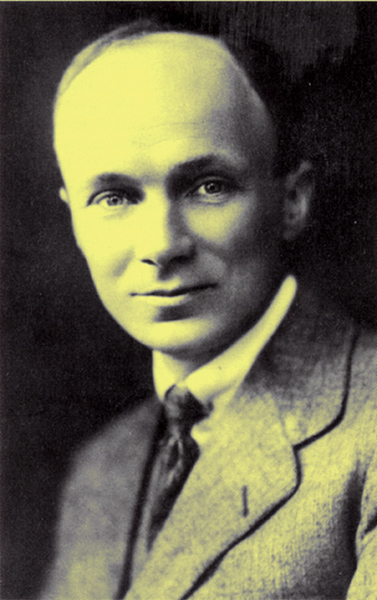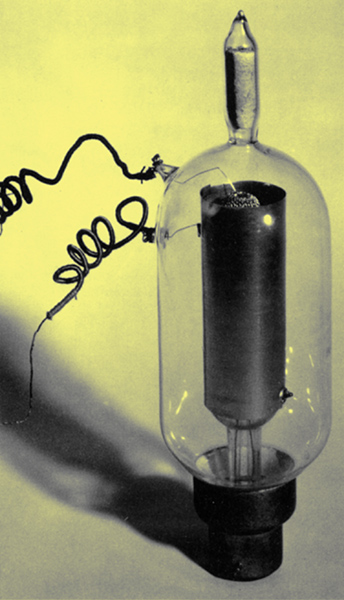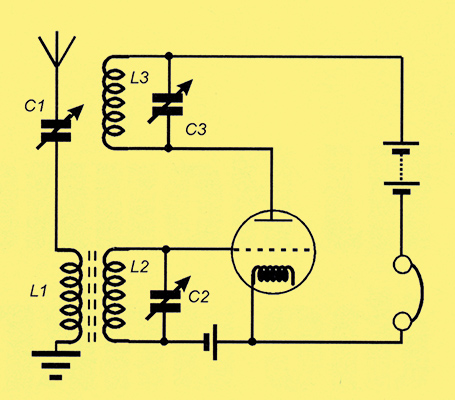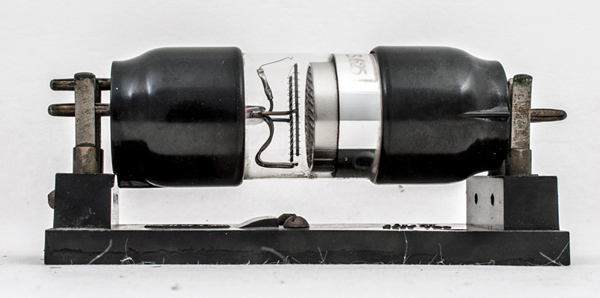|
Henry Round is not the most well known of scientific pioneers but he had a great impact on British history as well as being one of the leading lights in early radio development. If it was not for him, the Battle of Jutland, the largest naval battle of the First World War would not have occurred and neither would valve or radio development have progressed so swiftly during the first half of the twentieth century.

On top of the valve and radio developments, he made significant contributions to the development of ASDIC. As for his character, Round himself was an individualist. Short in stature, he was something of an extrovert and rather Churchillian in appearance, even down to a cigar. He also had a dislike for unnecessary protocol, preferring to get to the right person and to the point as soon as possible Henry Joseph Round was born on 2nd June 1881 in the small Staffordshire town of Kingswinford. He was the eldest child of Joseph and Gertrude Round. His early education took place at Cheltenham Grammar School, but later he studied at the Royal College of Science where he gained first class honours.
Early work for Marconi
He started work by joining the relatively newly formed Marconi Company in 1902. It was a year after Marconi had made his historic first crossing of the Atlantic by radio. At the time the company was struggling financially as a result of the enormous outlay in building the transmitter sites for the Atlantic crossing, and revenues were only coming in slowly. Nevertheless Round was sent to the USA where his office junior was David Sarnoff, the man who was later to become the chairman of RCA (Radio Corporation of America), which was interestingly formed from the American Marconi Company. Here in the USA Round experimented with a variety of aspects of wireless. Between 1903 and 1904 his main focus of activity was dust cored tuning inductors. However he also found time to undertake some experiments with transmission paths over land and sea by day and night, as well as looking at direction finding using frame antennas. Although this work did not yield any patents, it proved to be very a very useful foundation for future investigations he was to undertake.
In one area Round made a discovery that was many years ahead of his time. In 1906 H H Dunwoody had discovered the crystal detector - an important rival to Fleming's diode valve. Round performed a number of experiments on the detector. During his experiments he used a variety of semiconductors and even applied a direct current to them. Whilst doing this he noticed that some emitted light. Round reported this in the 9th February 1907 edition of Electrical World. This is the first known report of the effect of the light emitting diode. Unfortunately Round was well ahead of his time and it took until the 1960s before it was fully exploited.
Redundant
Whilst the Marconi Company was breaking much new ground, its finances were far from sound. Large amounts of money needed to be invested into research and development as well as the installation of expensive new equipment. This meant that money was very short within the company, particularly the American Marconi Company. Accordingly Round found himself without a job. After being turned away by Edison, Round found employment with the New York Telephone Laboratories. However he did not stay long with the Telephone Laboratories because Marconi soon found himself in a position to re-instate Round and he returned to England.

Type CA Valve designed by H J Round, circa 1916.
In England he became deeply involved in the problems of valve amplification. This work soon paid dividends and in 1913-14 he patented a number of ideas for valve improvements including that of an indirectly heated cathode, which became the key to enabling valves to be used far more effectively and far more widely. He developed valves for Marconi equipment and also during this time he patented his auto-heterodyne (autodyne) receiver and developed the first use of automatic grid bias.

Round's Autodyne receiver.
War
At the outbreak of the First World War, Round was seconded to Military Intelligence. With his previous experience in direction finding, he set up a chain of direction finding stations along the Western Front. These were so successful that he was requested to install a second system in England. It was on 30th May 1916 that these stations reported a 1.5 degree change in the direction of the communications from the German fleet that was supposedly at anchor at Wilhelmshaven. Combined with an increase in the level of traffic, the Admiralty correctly reasoned that they had put to sea. They ordered the British Fleet to put to sea to intercept the Germans, and the following day the Battle of Jutland was fought. It was the largest sea battle of all time. Although the British lost seven ships and about 7,000 men and the Germans three ships and around 2,500 men, it meant that the German fleet did not sail again. After the war it was revealed that it was as a result of Rounds endeavours that the Battle had taken place. Round made other contributions to the war effort, designing the first telephony transmitters and receivers for airborne use. For all his services during the war, Round was awarded the Military Cross.
Peace
With his return to civilian life, Round turned his energies to more peaceful and commercially profitable developments for the Marconi Company. His first activities were focussed towards new valve developments. He developed two new transmitting valves that were given the part numbers MT1 and MT2. Using these valves he developed transmitters that were capable of producing up to 20 kilowatts of power. In March 1919 he undertook the installation of a telephony station at Ballybunion in Ireland. Operating at a wavelength of 3,800 metres, this was the first European station to be heard in North America.
Later in 1919 Round developed more transmitters for range testing. These were located at the Marconi works in Chelmsford and radio amateurs were invited to listen and report on the transmissions. To provide some interest the carrier was modulated with a variety of sounds. When this included music, many enthusiastic reports were received from listeners who had enjoyed listening. As a result the idea of broadcasting as we know it today had dawned. Accordingly a regular wireless telephony news service was inaugurated on 23rd February 1920. Three and a half months later on 15th June Dame Nellie Melba, the famous Australian soprano, took part in a broadcast concert organised by the Daily Mail. This created a significant amount of public interest and many people listened to it. Unfortunately these entertainment transmissions were soon stopped because of the interference that was being caused to more serious uses for wireless. Nevertheless, two years later more entertainment broadcasts were licensed, but this time from Writtle just outside Chelmsford. With the call sign Two Emma Tock (2MT) the station took to the air using a transmitter again designed by Round. The success of this station lead to the establishment of another station at Marconi House in the Strand. With the call sign 2LO this station was taken over by the BBC at its formation in 1922. Round naturally played a very significant role in the foundation of broadcasting, providing much of the technical expertise and drive to ensure that it succeeded.
Despite his enormous efforts in establishing broadcasting, Round was still working on other projects. One of these was to convert the Marconi station at Caernarfon from a spark transmitter to valve transmission. This was no small undertaking. Using 56 MT2 valves with a plate high tension supply of 10 kV the transmitter was very powerful and on 19th November 1921 signals from the station were heard in Australia.
Other Work

The S625 screened grid valve.
Round was appointed chief of Marconi Research in 1921, and he remained with the company until 1931, continuing to provide a phenomenal rate of output. During the remainder of his time with the company he designed and built maritime valve receivers and transmitters, designed the first screened grid valve the S625, a broadcast receiver, a gramophone recording system and a large public address system that was used to relay King George Vs speech at the Wembley Exhibition. He also devised a system for providing sound with films during the 1930 cinema boom.
Despite all these successes, in 1930 Round decided to go into private practice as a consultant. However, he still worked very closely with the Marconi Company, frequently returning to undertake consultancy work there. Shortly after the outbreak of World War Two he worked for the Admiralty on ASDIC, continuing to work on this until 1950. After this period he undertook some more work for Marconi, primarily working on echo sounding.
Private Life
Round was married in 1911 to Olive Wright Evans. They were blessed with seven children, two sons and five daughters. Sadly his eldest son John was a Spitfire pilot and was killed in action in World War Two. He outlived Olive and remarried in 1960 to Evelyn Bays. Round himself died in August 1966 in a nursing home in Bognor Regis after a short illness.
During his life he had achieved an astounding amount. He revolutionised the receiver design of the day. He developed new valves and moved thermionic technology forward. In addition to this he played a significant role in the technology used for the war effort in two world wars. He also had the distinction of being the first person to note the effect used today in light emitting diodes. He was awarded two main honours. In the First World War there was the Military Cross for his efforts mainly on direction finding and then in 1951 he was awarded the coveted Armstrong Medal by the Radio Club of America. Despite these two awards his name is not widely known and he is very much an unknown genius.
Further information about all aspects of radio and electronics technology, new and old can be found at radio-electronics.
|